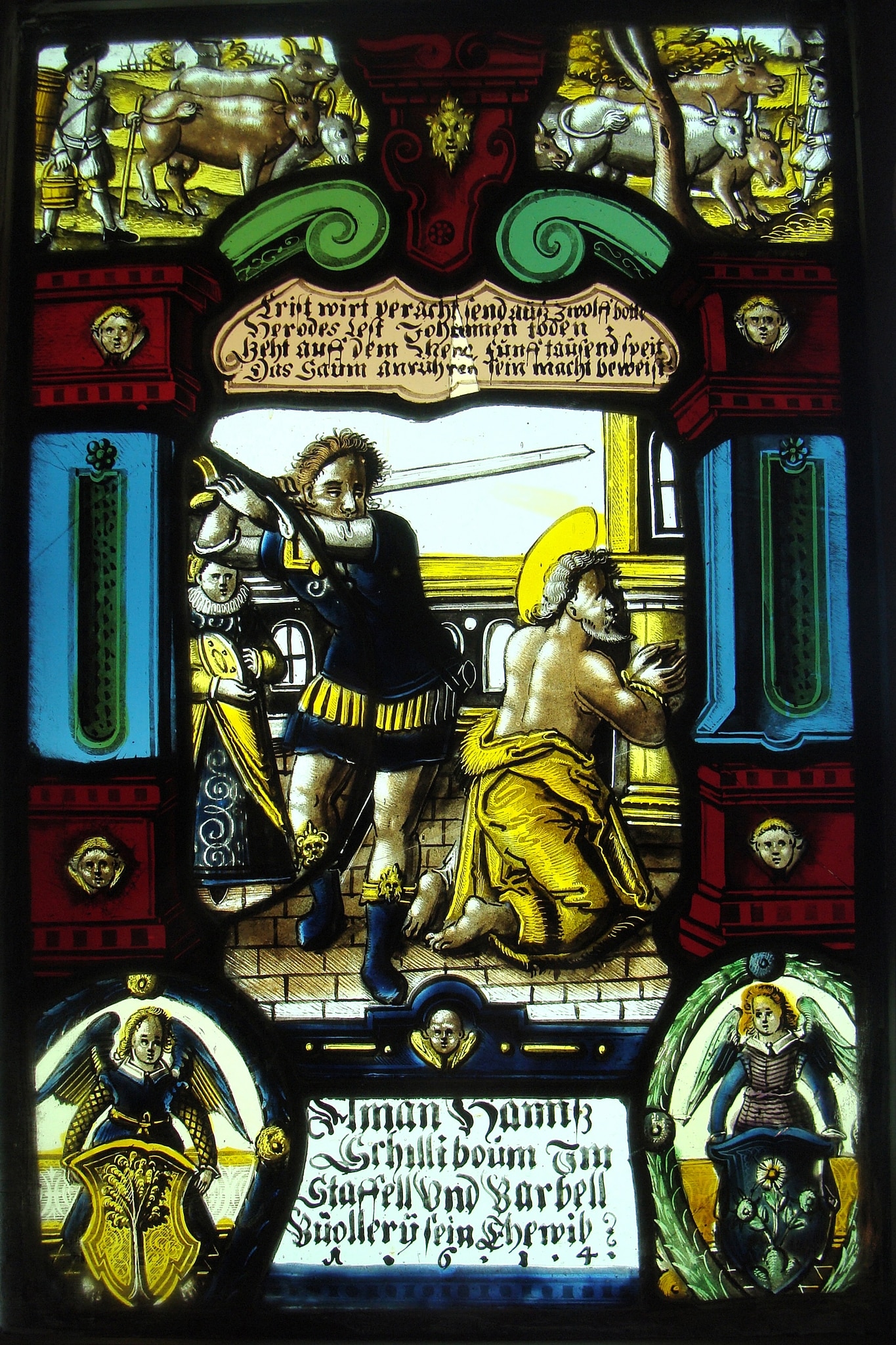A central scene is framed by massive blue pilasters with green inserts terminating in red capitals and bases adorned with cherub’s heads. Two green volutes above meet at a red keystone which holds a satyr’s head. Below, rhymed couplets under the arch refer to John’s death and to Christ miracles. The executioner is about to commence the downward stroke while the saint kneels, back exposed and bound hands lifted in a praying position. John’s acceptance of his martyrdom is found in the Gospels (Matthew 11:1-11 and 14:1-12). To the back and left, Salome, in seventeenth-century dress with white neck ruff and overskirt opened to show a patterned underskirt, waits with her platter. An architectural background suggests that the scene takes place on a parapet or in a courtyard in Herod’s palace. Above is a scene of a prosperous farm with farm workers driving milk cows. On the left, one of the workers has a transport bucket strapped to his side and a milking bucket in his hand. Below, to left and right, two oval wreaths frame heraldic shields held by angels. The dedication plate is between them.
46A122(SCHAELLIBAUM) · armoiries, héraldique (SCHAELLIBAUM)
47I1 · agriculture
47I223 · traire
73C1333 · la décollation de Jean Baptiste
Arms of Schällibaum: Or a tree proper.
Arms of Bühler: azure on a triple mount vert three daisies proper.
Crist wirt veracht send aüβ zwolff botte/ Herodes lest Joh[a]nnen toden/ Geht auff dem Mer[e: rect. er] fūnfftaüsend speit/ Das Saüm anrūh[ren: rect. rt] sein macht bewist (above scene. Christ is mocked [or despised], sends out the twelve messengers [Apostles]. Herod orders John put to death. He [Christ] walks on the sea; feeds five thousand. The touching of the seam of his garment shows his power.)
Aman Hannβ/ Schilliboüm Jm/ Staffell Vnd Barbell/ Büollerÿ sein Ehewib/1614 (below scene. Commissioner Hans Schällibaum from Staffel and Barbell [Barbara] Bühler his wedded wife, 1614)
none
